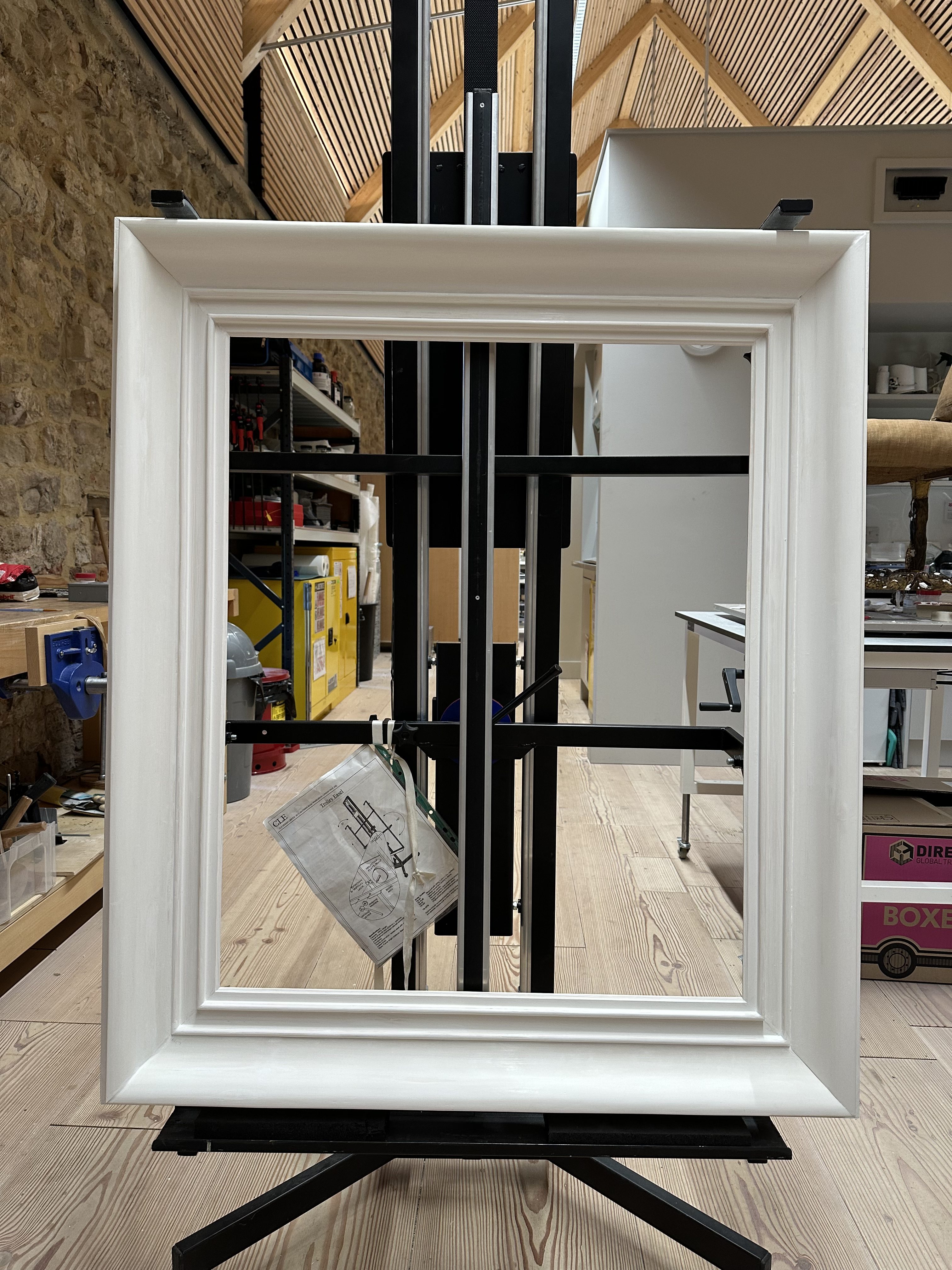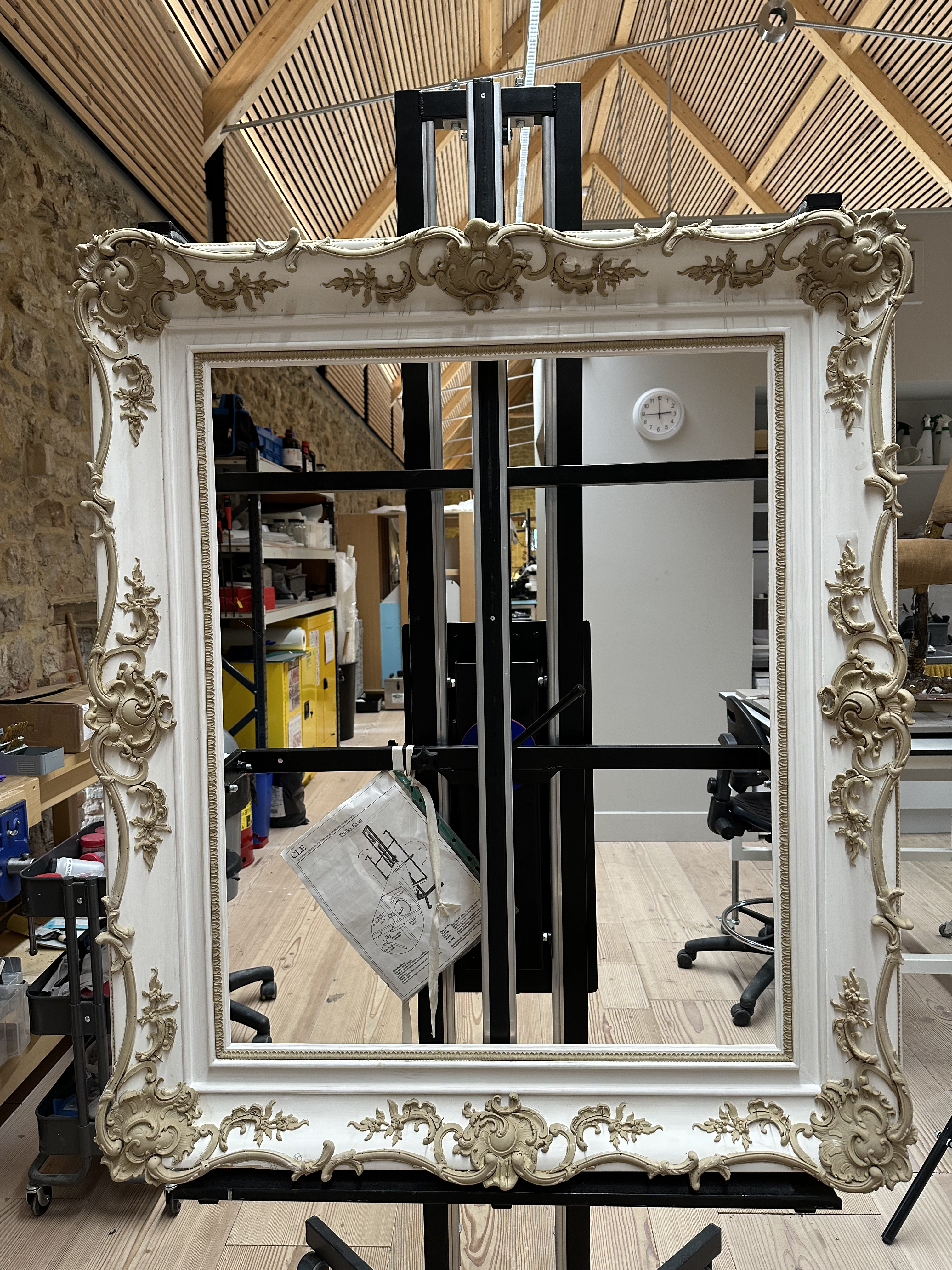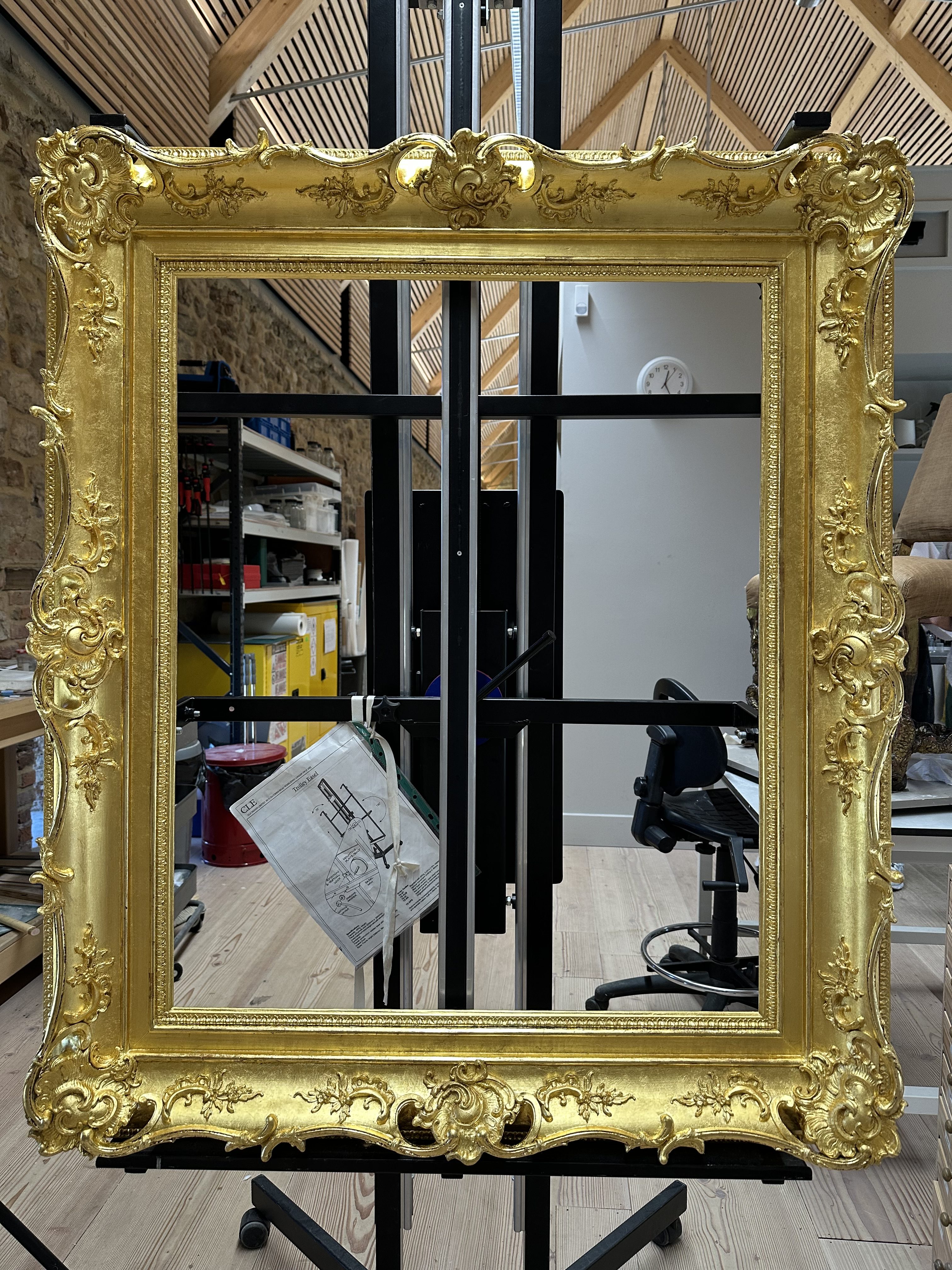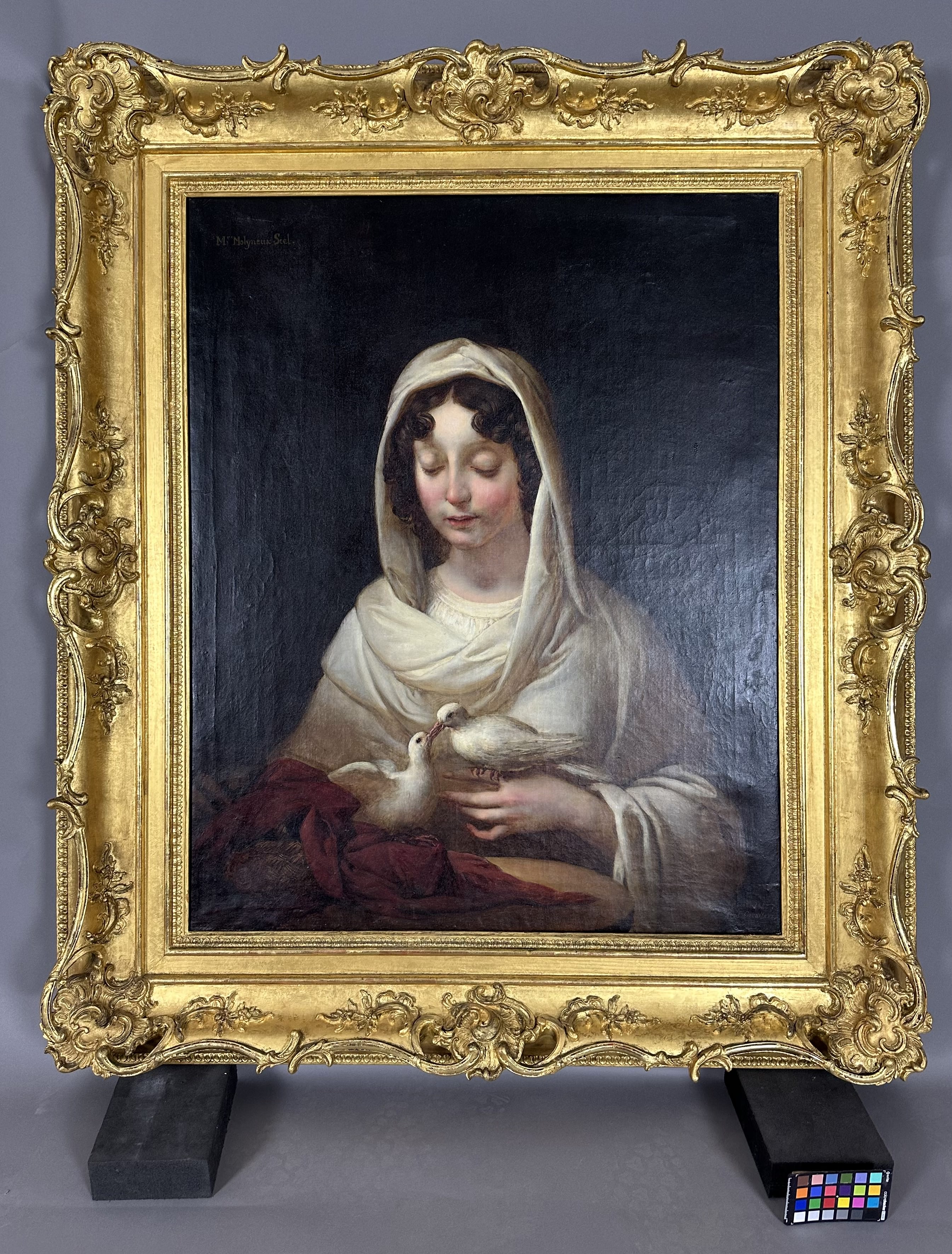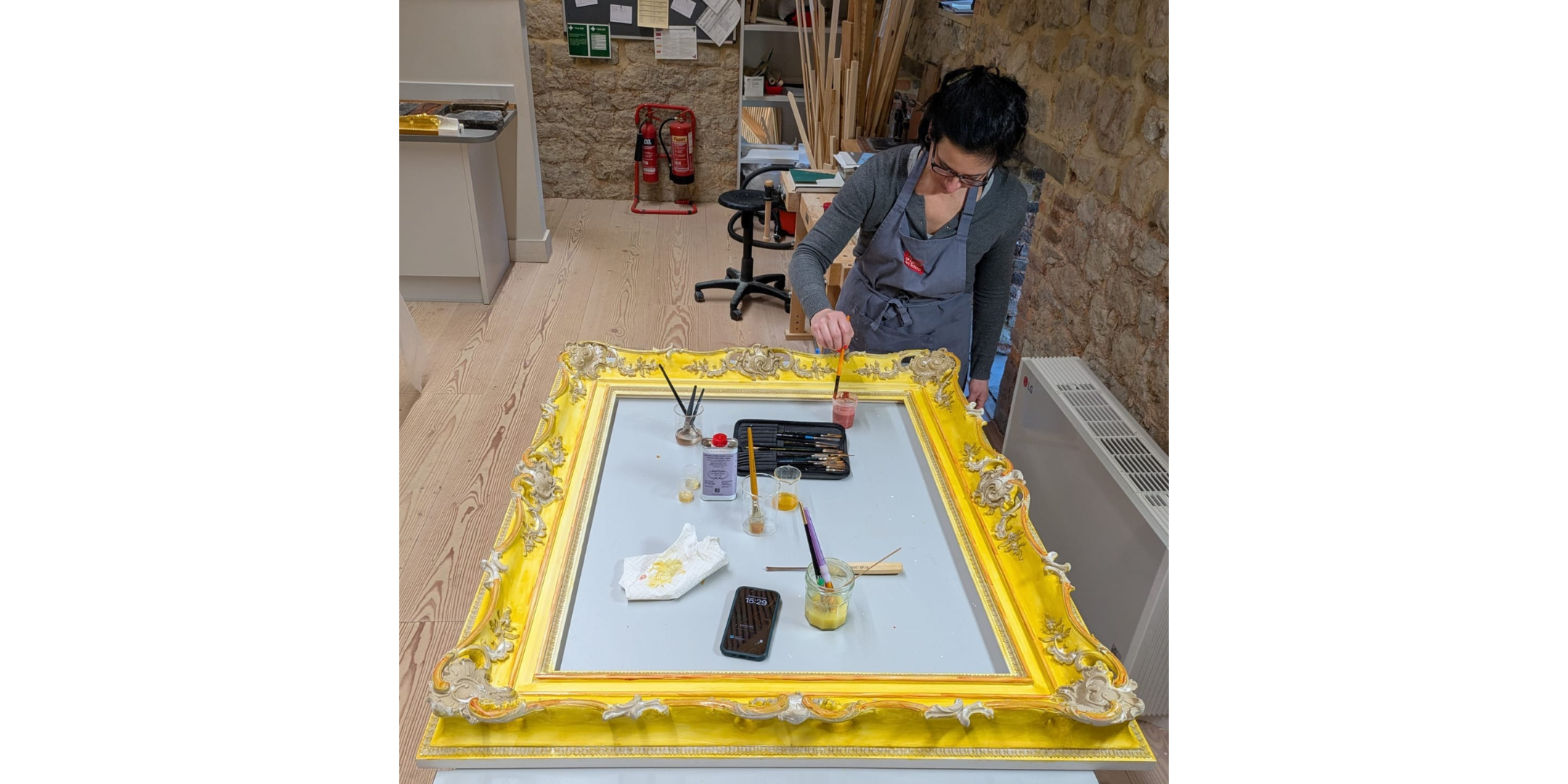
As a recent graduate of the City & Guilds of London Art School with a BA (Hons) Conservation: in Stone, Wood and Decorative Surfaces, I had the opportunity to contribute to an important frame conservation and replica project at the Royal Oak Foundation Conservation Studio, National Trust. This project was undertaken as part of a training contract, which allowed me to deepen my practical understanding of traditional frame-making techniques and engage with the full process of constructing and finishing a historic-style frame.
The focus of the project was the paired portraits of Agnes and Thomas Molyneux Seel, part of the collection at Oxburgh Hall. The original frame surrounding Thomas’s portrait required conservation, while Agnes’s portrait needed a crafted replica. Both frames were made using “composition,” a traditional method for creating ornate decorative elements, widely used in historical frame-making.
This work carries broader cultural significance, as composition picture frame making is currently listed on the Red List of Endangered Crafts. With few active practitioners and limited opportunities for hands-on training, the continuation of this heritage craft relies on projects like this, which support both conservation outcomes and skills development.
Following research into frames from the period 1820–1830, the decision was made to base the replica on a Rococo style, while adhering to the original frame’s swept-centre and corner baroque-style profile. This approach ensured stylistic cohesion and historical sensitivity.
A complete set of 19th-century Rococo moulds was sourced from Joseph McCarthy Fine Frames Ltd, who generously lent the moulds for the project. These moulds were essential in replicating the ornamentation typical of the period.
The frame-making process began in the studio, where profile mouldings were constructed and joined using traditional hand and modern tools like moulding planes for the ogee curves, a router for shaping the inner frame, and extensive sanding for surface refinement.
Ornamental details were then pressed in composition and applied to the frame. Additional swept sections were cut, and pierced detailing around the ornamentation enhanced the visual lightness and flow of the overall design.
The decorative finish was applied using oil gilding across the majority of the surface. Select inner elements, including the bands and astragals, were highlighted with water gilding to bring contrast and definition. The final stage involved toning the replica to match the historic frame’s aged appearance using wood stains, watercolours, and Gamblin conservation colours.
This project not only brought new life to a pair of important historic portraits but also served as a valuable training experience—allowing for the development of a wide range of practical skills in frame conservation and reproduction and contributing to the continued practice of an endangered heritage craft.
Words and Images: Julieta Herrera, BA (Hons) Conservation: Stone, Wood and Decorative Surfaces (2024)
